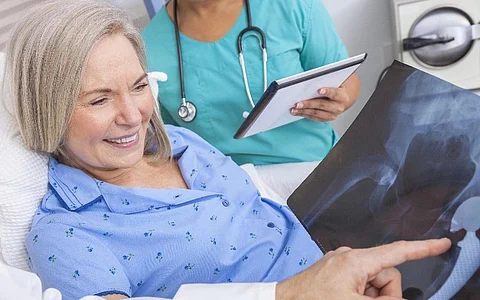THURSDAY, Feb. 15, 2024 (HealthDay News) -- Use of computer navigation (CN) or robotic assistance (RA) is not associated with an increased risk for periprosthetic joint infection (PJI) within 90 days after total hip arthroplasty (THA), according to a study published online Feb. 7 in the Journal of Bone & Joint Surgery.
Scott M. LaValva, M.D., from the Hospital for Special Surgery in New York City, and colleagues conducted a retrospective review of the medical records for 12,726 patients who underwent primary THA at a single institution between 2018 and 2021. Patients were stratified by surgical technique (conventional THA, CN-THA, or RA-THA) and were propensity score-matched in a 1:1 ratio. The rates of PJI within 90 days postoperatively were compared between the groups.
Data were included for 4,006 patients in the THA versus RA-THA analysis (2,003 in each group) and for 5,288 in the THA versus CN-THA analysis (2,644 in each group) after propensity score matching. The researchers found that the operative times were three and 11 minutes longer in the CN-THA and RA-THA groups compared with the conventional THA group. PJI rates were comparable after conventional THA (0.2 to 0.4 percent) and after CN-THA and RA-THA (0.4 and 0.4 percent, respectively). There was no significant association for development of PJI with use of CN or RA in logistic regression.
"While the long-term clinical, functional, and implant-longevity outcomes associated with the use of computer navigation or robotic assistance remain to be elucidated, the findings of the present study are reassuring with respect to the risk of infection," the authors write.
One author disclosed financial ties to CellSource.
Abstract/Full Text (subscription or payment may be required)


